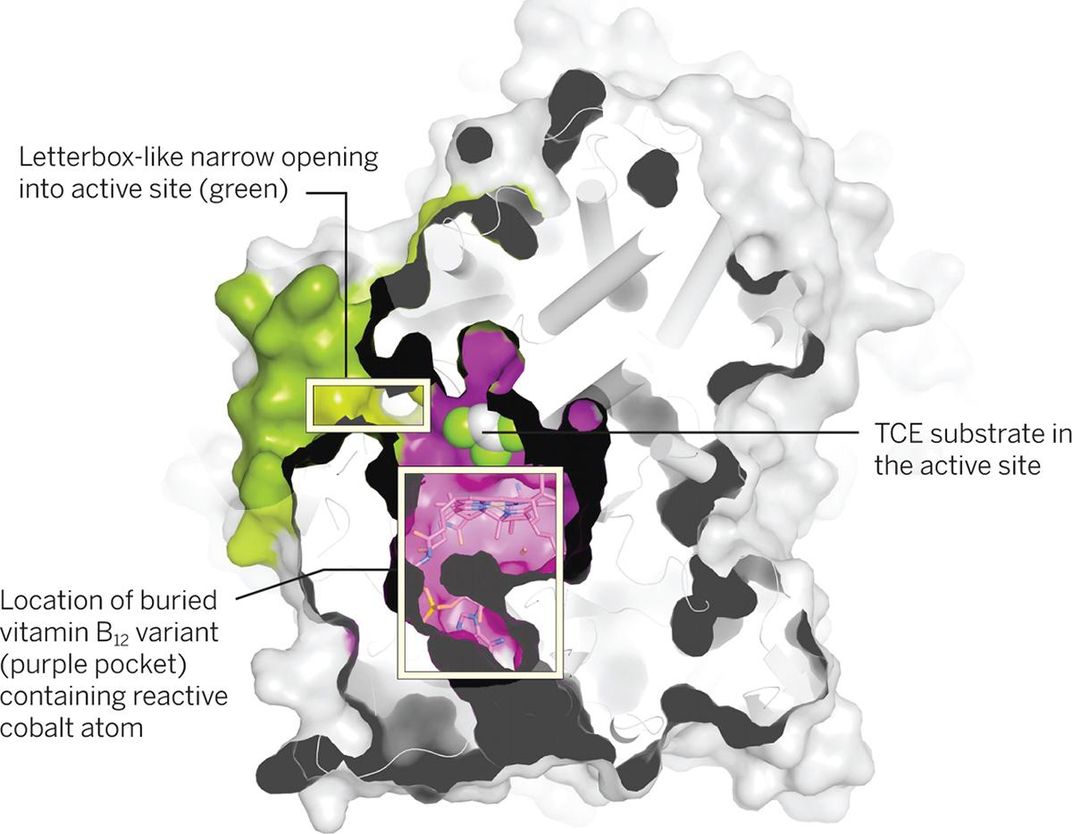New Understanding of Toxin-Loving Organisms May Help Tackle Pollution
A breakthrough in the understanding of how bacteria break down toxins using vitamin B12 could lead to improved cleanup methods
:focal(1653x2172:1654x2173)/https://tf-cmsv2-smithsonianmag-media.s3.amazonaws.com/filer/65/93/6593b016-7222-49a7-9c81-142c22a75fe1/deepwater-horizon-oil-spill.jpg)
It’s been known for decades that certain organisms, found primarily deep in the ground and under bodies of water, can break down the toxic substances created by many industries. These pollution-gobbling microbes have been used to treat things like groundwater contamination and the Deepwater Horizon oil spill, in a process known as bioremediation. But the method hasn't exactly taken off—reproducing enough of these organisms for treatments and further study has been difficult, and scientists haven't quite understood how the organisms actually dismantle these complex chemicals.
Researchers at the University of Manchester, however, have just discovered that these microscopic organisms use the common vitamin B12 to break down toxic byproducts, and the finding could soon lead to powerful new cleanup techniques. Their study, recently published in the journal Nature, explains how they used X-ray crystallography, a process that measures the defraction of X-rays to create detailed 3D images of atomic structures, to witness how the process works in the organisms for the first time.

Organohalides (named for their covalently bonded halogen atoms) are nasty byproducts of the manufacturing of things like non-stick frying pans, dry-cleaning solvents and industrial degreasers. Volcanoes and lightning strikes emit them in small amounts too. Some ground-dwelling, toxin-loving organisms actually “breathe” the organohalide molecules in, separating some or all of the halogen molecules in the process, the same way humans inhale oxygen and expel carbon dioxide. According to a recent article in Science, these organisms let the halogen-containing toxins in through a thin, water-repelling opening, and hold them in a pocket that contains a specific type of vitamin B12, along with enzymes that catalyze the halogen-reducing process. The vitamin B12 is key to the process, as it contains a reactive cobalt atom that breaks the carbon and halogen bond. Even when the process doesn’t remove all of the toxins, it still increases the molecule’s solubility, allowing it to more quickly disperse and break down. The team also claims to have overcome the challenge of producing the organisms in large quantity, by genetically modifying other, faster-growing organisms to produce the key pollution-busting enzymes.
David Leys, one of the paper’s authors, has been working on understanding this detoxification process for 15 years. The organisms, collectively called reductive dehalogenases, he says, are often found at halocarbon contamination sites, such as bodies of water near factories that produce industrial chemicals. Leys adds that some of these organisms contain more than 35 different halogen-reducing enzymes, which means there is plenty of opportunity for improving the process of toxic cleanups, but much more to study, as well.
“We could start trying to predict what compounds a particular bacterium/enzyme [combination] can use from the genome sequence,” says Leys. He also says the knowledge gained from the research will alow scientists to engineer the organisms and their chemical processes to target specific man-made toxins.
Aside from improved toxic cleanup, the breakthrough should lead to better detection of organohalides in food supplies and the environment. The bacteria’s halogen-seeking systems could be coupled with a system that produces a fluorescent green protein, creating a visible marker in the presence of the toxins. Alternatively, electrodes might be used to monitor the active enzymes for specific signals the organisms emit in the presence of organohalides.
It's unclear exactly how or when this new knowledge will drastically change the cleanup process of chemical pollutants, as there is much work yet to be done. But knowing exactly how the process works should spur advancements.
/https://tf-cmsv2-smithsonianmag-media.s3.amazonaws.com/accounts/headshot/unnamed.jpg)
/https://tf-cmsv2-smithsonianmag-media.s3.amazonaws.com/accounts/headshot/unnamed.jpg)